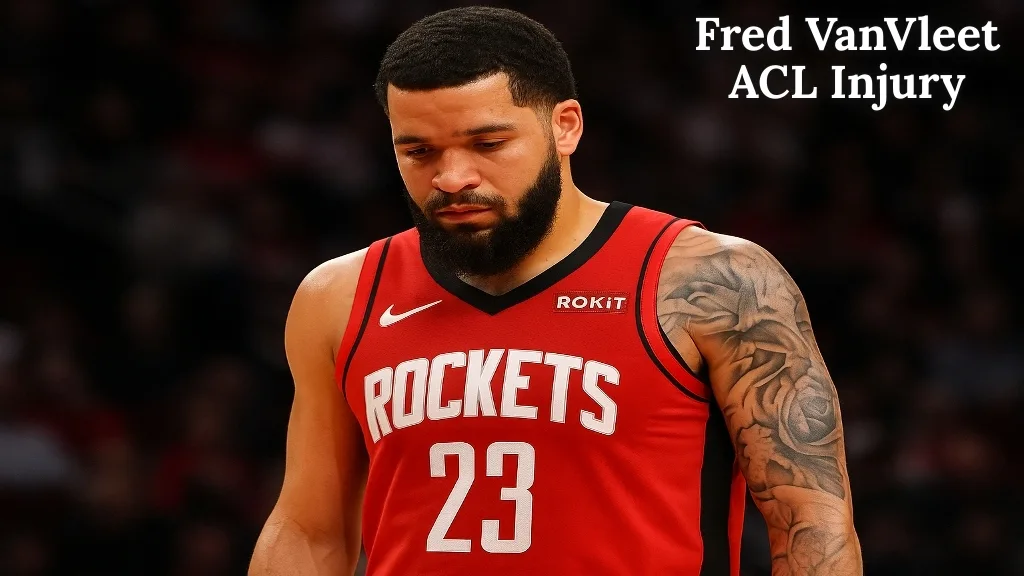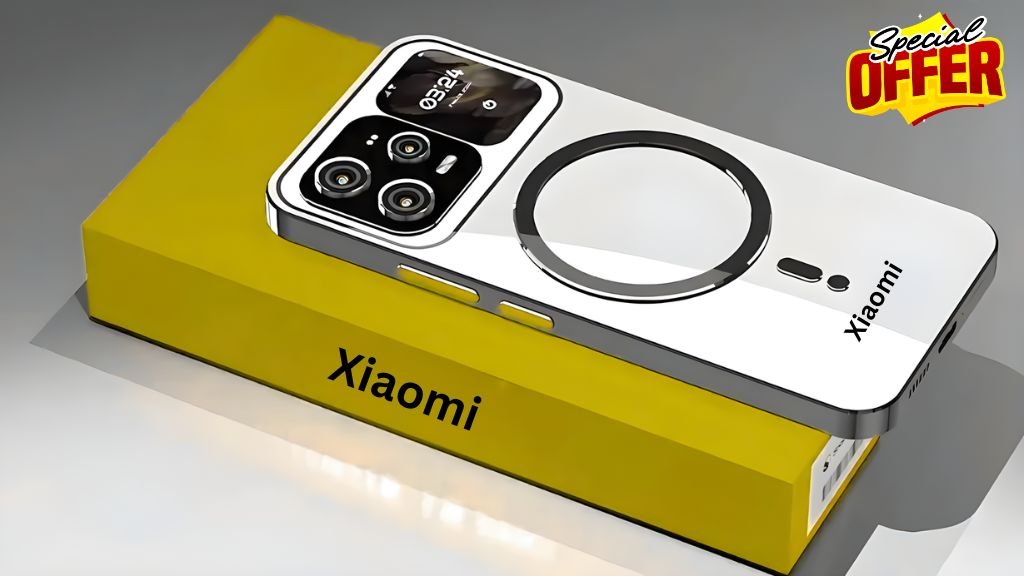The news dropped like a hammer: Houston Rockets point guard Fred VanVleet ACL injury and is expected to miss most, if not all, of the 2025–26 NBA season. Reports indicate the injury occurred during offseason work and that the timeline points to a long rehabilitation stretch, the kind that reshapes a team’s plans overnight.
| Snapshot | Details |
|---|---|
| Injury | Torn ACL (knee), suffered during offseason/minicamp activities; season-long absence likely |
| Reported by | ESPN (Shams Charania), aggregated by NBA.com and other outlets |
| Contract status | Two-year deal in place to remain with Houston |
| Immediate impact | Rockets lose their lead guard, floor general, and late-game organizer |
| Next up | Amen Thompson, Reed Sheppard, Aaron Holiday and committee ball-handling |
The Immediate Gut Punch
VanVleet’s value to Houston goes far beyond his raw numbers. He’s the voice in huddles, the organizer who calms late-game chaos, and the tone-setter for a young roster that learned how to win the hard way. In two seasons with the Rockets, he helped transform them from a rebuilding group to a genuine playoff outfit. That arc—steady wins, tighter defense, cleaner late-game execution—has his fingerprints all over it, which is why this injury hits like a body blow in September.
What We Know About the Injury and Timeline
Early reporting labels the injury a torn ACL, which historically requires surgery and a lengthy rehab, commonly 9–12 months for NBA guards depending on individual progress. ESPN’s initial note and NBA.com’s aggregation both framed his availability for the entire 2025–26 campaign as doubtful. That’s not definitive—the human body doesn’t follow press releases—but it is a fair read of the calendar. The timing, just ahead of training camp, compresses the Rockets’ options and complicates any roster pivot.
Why VanVleet Matters So Much to Houston
When VanVleet arrived, the Rockets were trying to re-establish a professional baseline: defend, value the ball, execute, finish. He brought championship habits, a coach’s mind in a player’s body, and a willingness to take responsibility when possessions got muddy. The results were tangible—improved win totals, a postseason return, and a steadier identity. Even as the roster added more star power and upside, his perimeter decisions and late-clock shotmaking welded everything together. Losing that presence forces Houston to learn how to handle crunch time without its metronome.
The On-Court Ripple Effects
The Rockets’ offense toggled between early-clock pace and late-clock precision because VanVleet could do both—push when the wing lanes opened, slow when the matchup demanded set play. Defenses had to honor his pull-up three, and that gravity kept driving lanes clean for Houston’s slashers and bigs. Without him, spacing and tempo need re-mapping. The shooting threat at the top of the floor diminishes, and the Rockets must manufacture the same quality looks with different initiators. Expect more empty-corner pick-and-rolls to simplify reads, more dribble-handoffs to jump-start actions, and a heavier dose of cuts to keep the paint unclogged.
Amen Thompson’s Moment
This is where the season turns for Amen Thompson. He has the jets to blow by the first line of defense and the size to see over traps, but his role now expands from energy-and-creation to orchestration-and-control. The task: run the show without hemorrhaging turnovers, get the ball to scorers in rhythm, and defend the other team’s best guard as often as matchups allow. Thompson’s development curve just steepened, but his athletic profile and defensive pride make him an enticing bet to handle a bigger workload at the point of attack. Several analysts have already circled him as the most natural internal answer.
Reed Sheppard, Aaron Holiday and the Committee Plan
Reed Sheppard’s shooting could be the quiet hinge. If he toggles between on-ball relief and off-ball marksmanship, Houston can keep the floor stretched while Thompson handles primary creation. Aaron Holiday offers veteran steadiness, capable of organizing second units and surviving tough minutes without derailing lineups. The committee approach will be real—staggering minutes so a plus passer is always on the floor, protecting young guards from matchup hunts, and riding whoever has the hot hand. Depth is suddenly not a luxury but a lifeline.
The Kevin Durant Factor and Late-Game Algebra
One major story line hovering over Houston is how the offense bends around Kevin Durant in crunch time with VanVleet out. Durant can initiate, but the Rockets ideally want him finishing—catching at his spots, punishing single coverage, and reading double-teams without fighting pressure 30 feet from the basket. That means someone must deliver the ball to Durant cleanly and on time, especially against playoff defenses. VanVleet did that work quietly. Now, Houston must rehearse its late-game packages so that Thompson, Sheppard, or Holiday can walk the team into the right sets under duress. External coverage has framed the injury as a blow to Houston’s top-tier ambitions for good reason.
What the Rotation Could Look Like
Without VanVleet, the guard/wing minutes compress and the margin for error shrinks. Thompson likely starts at the one, with a shooter alongside to stabilize spacing. Bench units might lean on motion-heavy sequences—Chicago action, Spain pick-and-roll, and split cuts—to create easy reads and keep the ball hopping. The staff can also explore small-ball lineups that weaponize speed and length, trading some structure for chaos and transition chances.
Can Houston Add Help?
The problem with an injury this late is constraint. Most meaningful ball-handlers are settled, many newly signed players aren’t tradable until mid-December, and cap mechanics limit splashy moves. That steers Houston toward short-term bargains, two-way opportunities, or early-season wait-and-see while the market clarifies. The Rockets have built enough credibility to be a destination for veterans seeking a role, but the meaningful fixes—if any—usually come after December when contracts unlock and early trends turn into leverage. Several reports have underscored that roster flexibility is tight in the near term.
Defense Without VanVleet
VanVleet isn’t the tallest guard, but he defends with great hands, positioning, and scouting. He knows where actions start and how to disrupt them before they blossom. That advanced feel is hard to replace. The counter is Thompson’s length and motor at the point of attack; if he lives in ball-handlers’ jerseys and Houston’s backline trusts its rotations, the Rockets can keep their defensive rating in the neighborhood they need. Expect more nail help from the wings, earlier low-man tagging, and a premium on finishing possessions with rebounds to prevent scramble cycles.
Playbook Tweaks You’ll Notice
Houston’s staff can sand down the offense so reads happen earlier and with fewer dribbles. Look for more early-clock drag screens to spring Thompson downhill, pistol action to hand the ball to shooters on the move, and Spain PnR to create weak-side confusion. The principle is simple: present two threats at once so the initiator is never staring at a set defense. Those second-side triggers—kick, swing, and attack—are how you recreate VanVleet’s late-clock calm with collective tempo.
The Psychology of Losing Your Organizer
There’s also a human layer here. VanVleet is one of those pros whose presence changes how teammates carry themselves. When he talks, it trims the mental fat off possessions. Young players tend to play faster than they think; VanVleet helped them think fast, then play with purpose. The locker room will feel his absence, and that’s where veterans—and the coaching staff—must fill in the gaps. The Rockets built a serious culture; this is the type of moment that tests whether it’s real.
The Long Road Back: Rehab and Return
ACL recoveries are highly individual. Modern sports medicine, targeted strength work, and biomechanical corrections have dramatically improved outcomes, especially for guards who rely more on balance and craft than pure vertical pop. VanVleet’s game has always leaned on timing, footwork, and intelligence—traits that age and rehab well. If the timetable stretches near a full season, Houston’s focus will be on getting him back right, not just back fast. That’s typically how teams protect both the player and the investment. Multiple outlets have framed the season-long absence as likely, which aligns with the conservative approach most teams take in September injuries.
What Success Looks Like Now
Success without VanVleet isn’t chasing a pristine seed; it’s building habits that translate in April. If Thompson stabilizes the offense, if Sheppard’s shooting travels, if the defense holds its shape, Houston can buy time until the market opens and, eventually, until VanVleet returns. You measure a season like this not just by wins but by how many winning problems you solve along the way—turnover control, late-game reps, lineup versatility, and mentally tough possessions against elite teams.
Around the League: Respect and Realism
League-wide reaction captured both the gravity of the loss and a wait-and-see pragmatism. There’s sympathy for a respected veteran and an acknowledgment that teams have survived similar hits by recommitting to structure. Media assessments were blunt: Houston’s title calculus gets harder without its quarterback. That’s fair. But 82 games are a laboratory, and creative teams often discover edges—pace spikes, defensive schemes, matchups—that weren’t obvious in September.
The Bottom Line
The Rockets didn’t just lose a starter; they lost their organizer. The system now has to carry the load that one player used to shoulder. That’s a challenge, but it’s also an invitation—for Thompson to grow into a full-time pilot, for shooters to own their gravity, for the defense to knit tighter, and for the coaching staff to turn constraints into a style that still wins.
FAQs
What exactly happened to Fred VanVleet?
Reports say he suffered a torn ACL in his knee during offseason activities, an injury that typically requires surgery and a long rehab. The early expectation is that he will miss most or all of the 2025–26 season.
Will he definitely miss the entire season?
Nothing is “definite” until the team announces a timeline post-surgery, but given the calendar, the consensus around the league is that a season-long absence is likely.
How does this change the Rockets’ starting lineup?
Amen Thompson projects to take on significantly more on-ball work. Expect Reed Sheppard and Aaron Holiday to absorb minutes depending on matchups and shooting needs, with rotations tweaked to ensure a steady ball-handler is always on the floor.
Could Houston sign or trade for another point guard right now?
The options are limited in September because of cap mechanics and trade restrictions on newly signed players. More meaningful avenues typically open after mid-December, when a larger pool of contracts become tradable.
How big is the loss in late-game situations?
Huge. VanVleet’s calm and decision-making anchored Houston’s crunch-time offense. The Rockets will need to shift toward Durant-centric finishes, with Thompson or Sheppard initiating and the offense using cleaner, earlier actions to get Durant the ball in his zones. External analysis widely views this as a hit to Houston’s top-tier ceiling.
What’s the long-term outlook for VanVleet after an ACL tear?
Modern recoveries are strong, and VanVleet’s game relies on craft, balance, and IQ—skills that tend to age well post-rehab. A cautious return timeline is likely, prioritizing full health over speed.
Final Word
The Rockets woke up to a new reality: the season will be a test of structure, development, and resolve. Fred VanVleet ACL injury tear removes a stabilizing force, but it doesn’t erase Houston’s identity. If they can convert this setback into sharper habits and smarter late-game basketball, they’ll keep their ambitions alive—and give VanVleet a meaningful stage to return to when the rehab journey finally ends.







